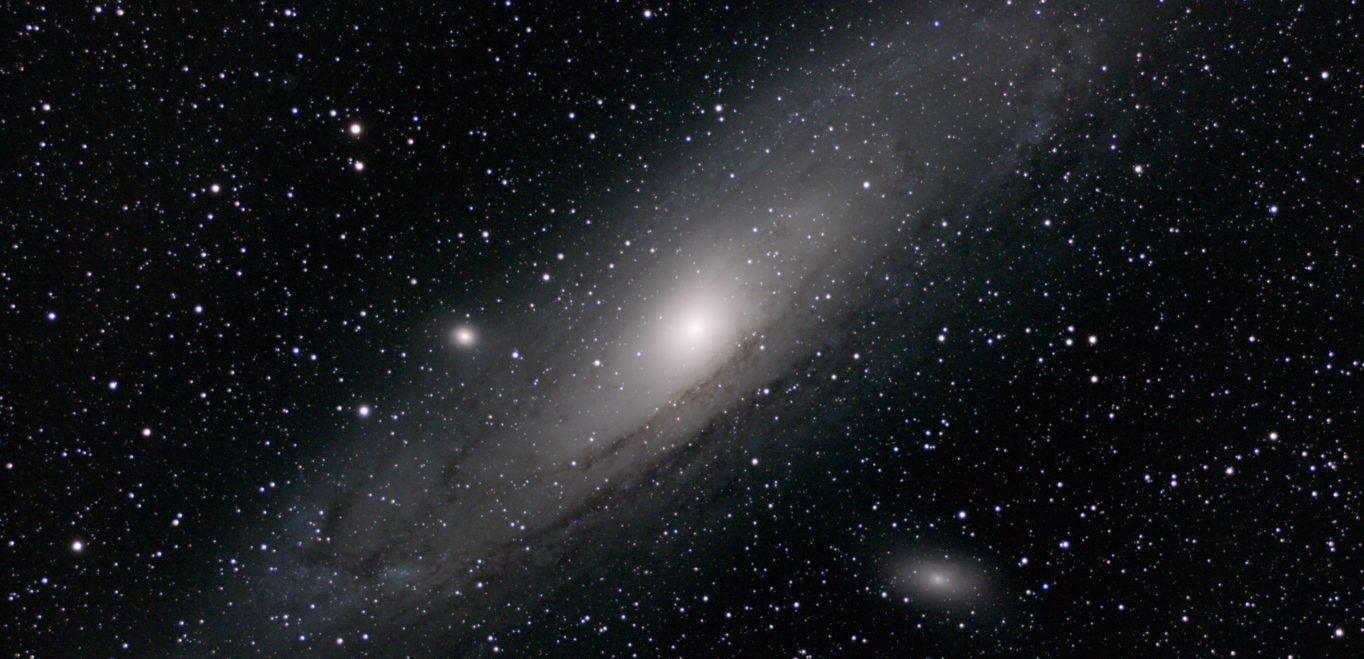Welcome to this month’s edition of Eyes on the Night Sky, where the Elan Valley Dark Sky Team pick out their favourite night sky objects to study in the September night sky with the unaided eye, binoculars or telescopes.
The sun sets at around 8pm this time of year and darkness falls at around 10pm, which isn’t too late to look for deep sky objects such as galaxies.
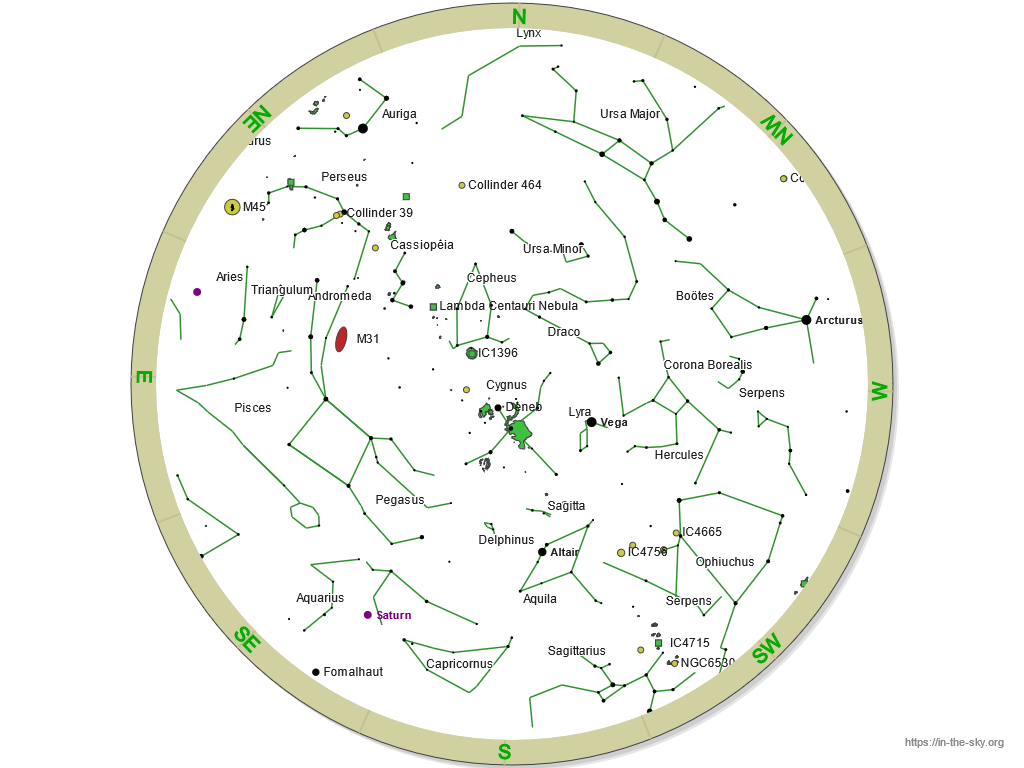
September Constellations
The Summer constellations continue their march into the western sky during this month; the constellations of Hercules and Lyra relatively well-placed. Cygnus is directly South with the Milky Way meandering through it, whilst the constellation of Pegasus with its enormous square asterism rises from the east with the constellation of Andromeda in its wake.
You can download the printable constellation map from here (credit: Dominic Ford, author in-the-sky.org).
The New Moon falls on 15th September and the Full Moon on 29th September.
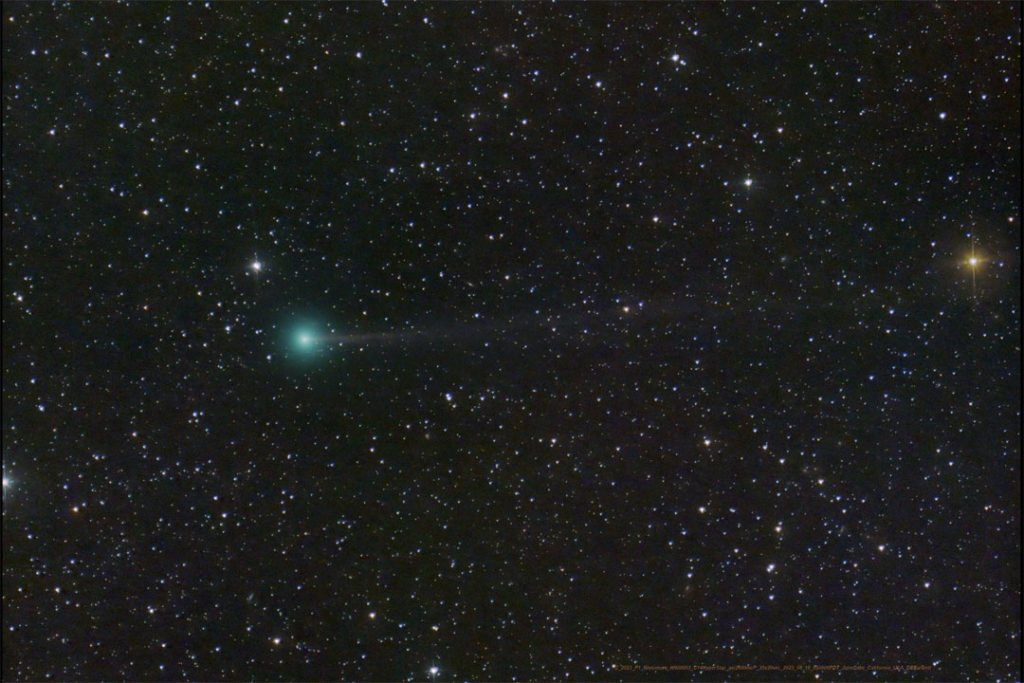
Comet C/2023 P1 Nishimura
We may have a special visitor in the early morning skies in the early part of September: Comet C/2023 P1 Nishimura. Recently discovered on 11th August by Hideo Nishimura, its closest approach to Earth will be on 12th September and may be spotted rising in the North-east at around 5am.
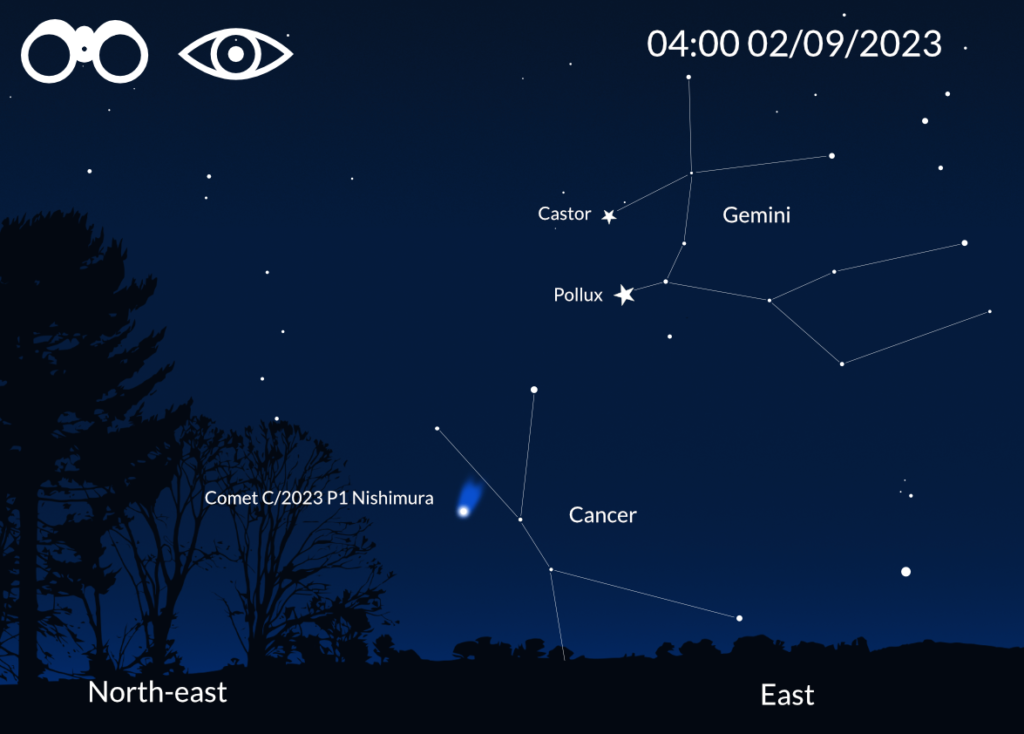
The best chance to see it relatively well-placed in the sky is around 4am on 2nd September. It reaches perihelion, where it is closest to the Sun, on 17th September. At the time of writing, it is currently bright enough to be seen by telescopes but could get bright enough to be seen with binoculars during the first week of September. Cometary activity and brightness are extremely hard to predict so keep an eye on reports and updates as they happen.
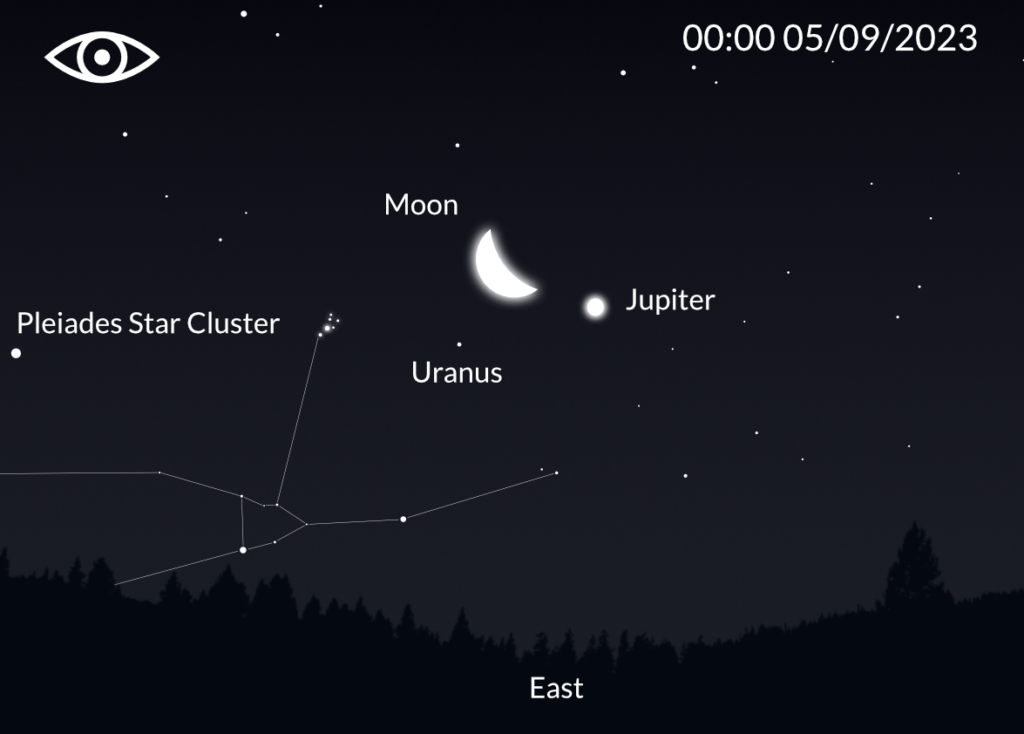
On 5th September at around midnight, look to the east and you will see the waxing gibbous Moon with Jupiter on the right-hand side and the Pleiades Star Cluster on the left. Uranus lies in the 8-o clock position from the Moon and can both be seen with binoculars.
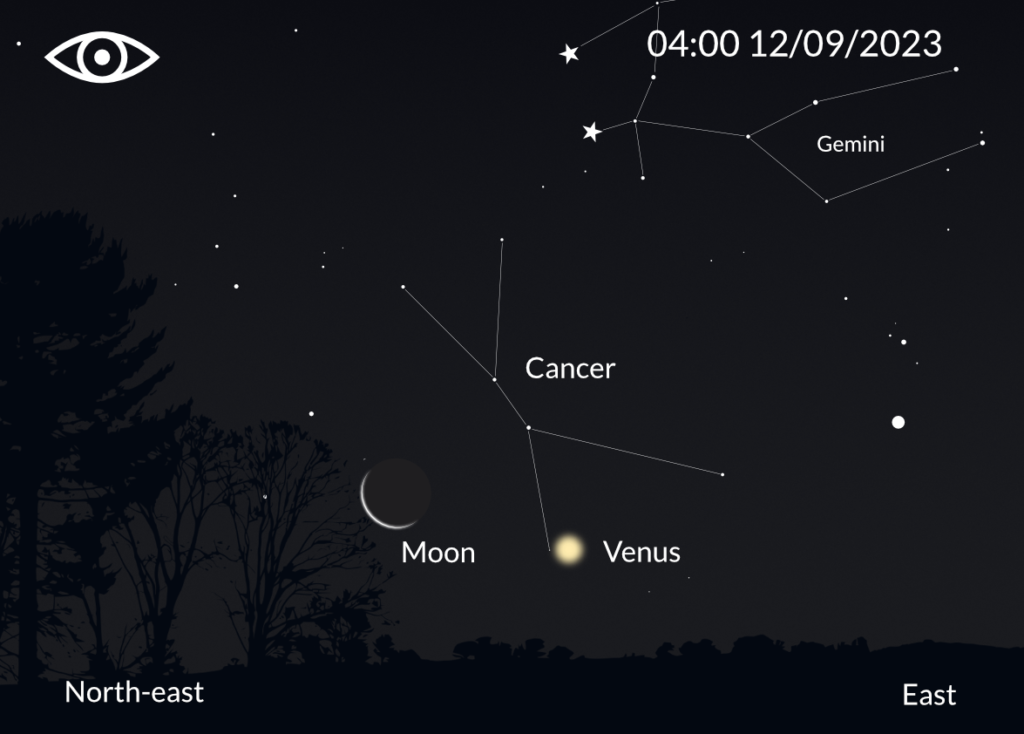
Bright Venus rises at around 4am at the beginning of the month. On 12th September, try to spot Venus to the right of the waning crescent moon; it is only 6% illuminated and by 5am, you may be able to see Earthshine on the lunar surface. If you have a telescope handy, take a look at Venus – the planet will also be in phase at about 20% full, looking like a little crescent Moon.
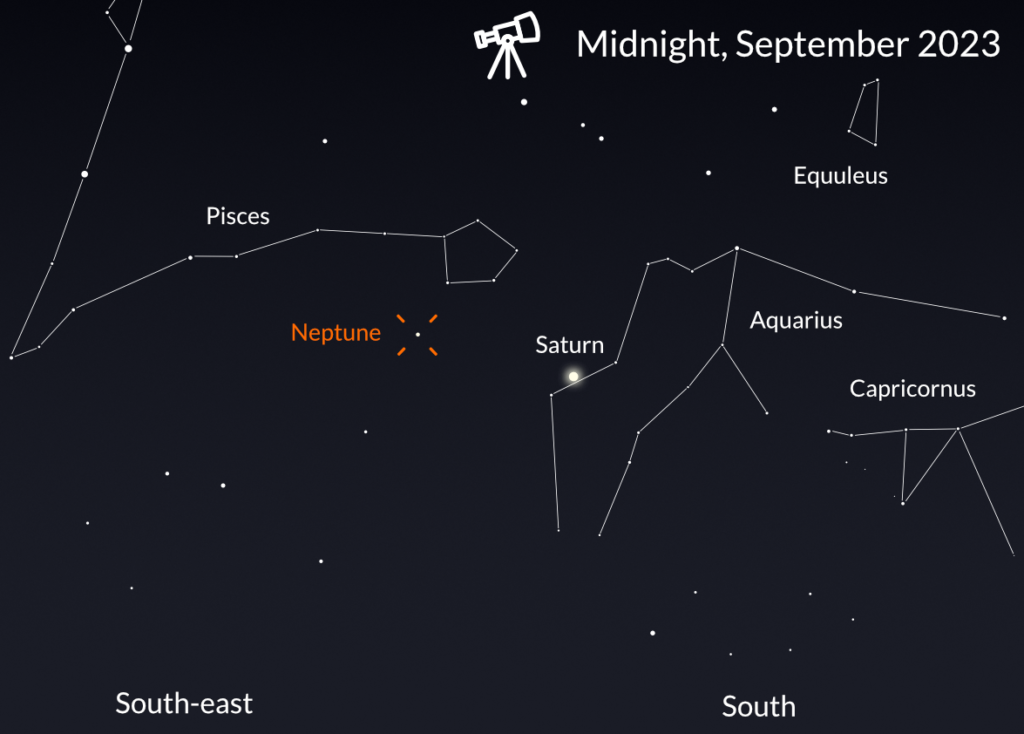
The best time to spot Neptune will be on 19th September, where it will be at its brightest and at its closest approach to earth (Opposition). At 2.7 billion miles form Earth, this ice giant can only be seen through powerful telescopes. You can try finding it with a 4-6 inch telescope where it may appear like a blue steady disk but it is a challenge to find.
On 22nd September, Mercury will be at greatest western elongation which means it will be at the highest point above the horizon. The planet will lie low in the eastern sky before the sun rises.
The September Equinox falls on 23rd September, where the Sun will reach the Zenith (highest point in the sky) for those living along the Earth’s equator. For the rest of us, there will be an equal amount of daylight and night. It is also the first day of Autumn.
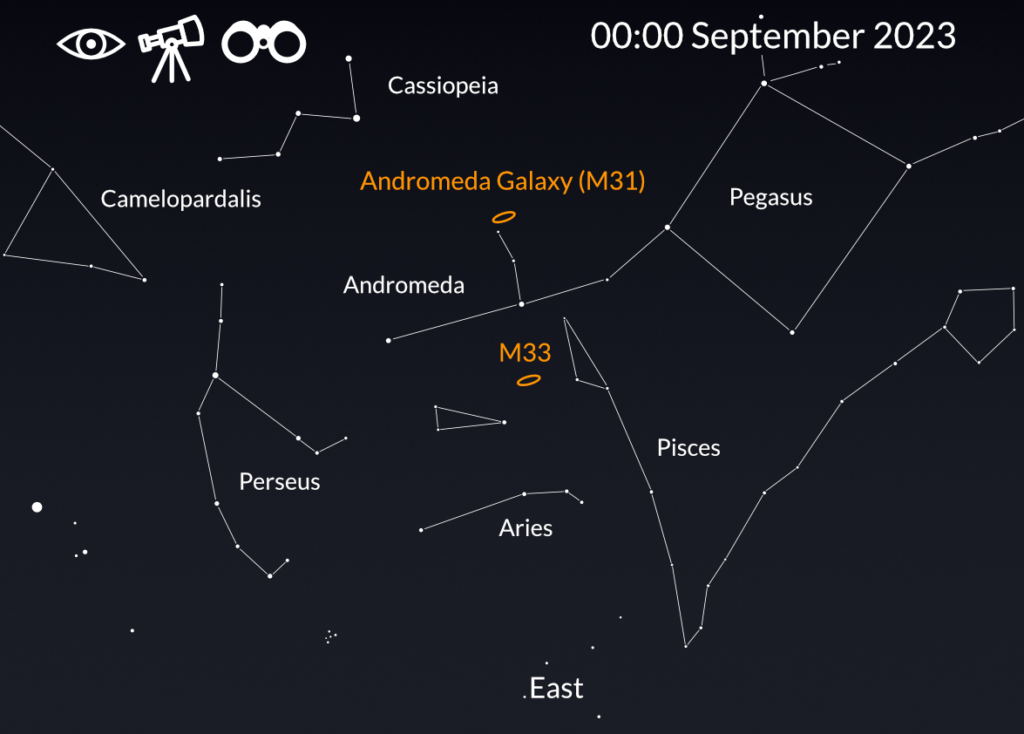
Galaxies Galore
September is a good time to study a few galaxies – in fact, a galaxy that is our nearest neighbour at 2.5 million light years distant.
Andromeda Galaxy (M31)
RA 0h 42m 44s | Dec +41° 16′ 9″
Andromeda Galaxy (M31) is a spectacular object that can be seen with the unaided eye in a rural sky but starts to look incredible through binoculars as a well-defined ellipse with a bright core. With a telescope of 8 inches of aperture and above in a dark sky, you may see hints of a dark dust lane. You will also see two other galaxies, M110 which lies above Andromeda Galaxy, and M32, which is the fuzzy ellipse just below.
M31 Photo: Torben Hansen, CC BY 2.0 https://creativecommons.org/licenses/by/2.0, via Wikimedia Commons
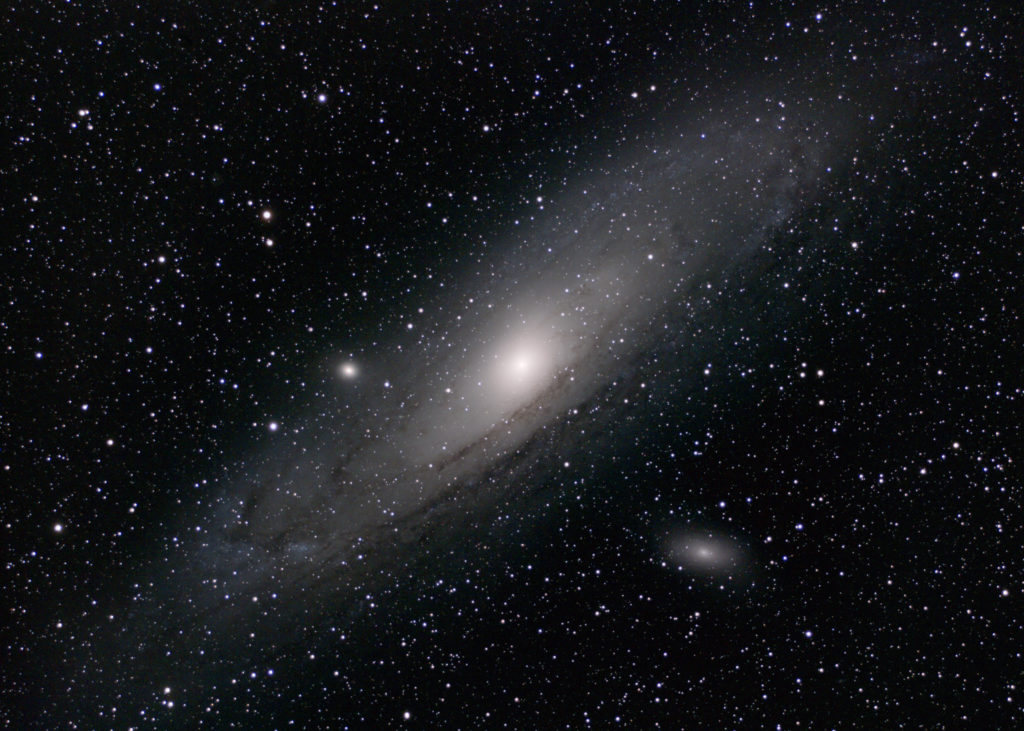

Triangulum Galaxy (M33)
RA 1h 33m 50s | Dec +30° 39′ 37″
The Triangulum Galaxy is 2.73 million light years away and is situated in the constellation of Triangulum. It is the third largest galaxy in the Local Group, with Andromeda Galaxy being the largest containing 1 trillion stars, our Milky Way Galaxy with 400 billion stars and the Triangulum Galaxy comprising 40 billion stars. You many be able to see this galaxy with the unaided eye in very dark skies but it can be spotted with binoculars as a ‘fuzzy blob’. Through telescopes of 8 inches aperture and larger, you may start to see the spiral arms, which become more apparent with increases in telescope size.

